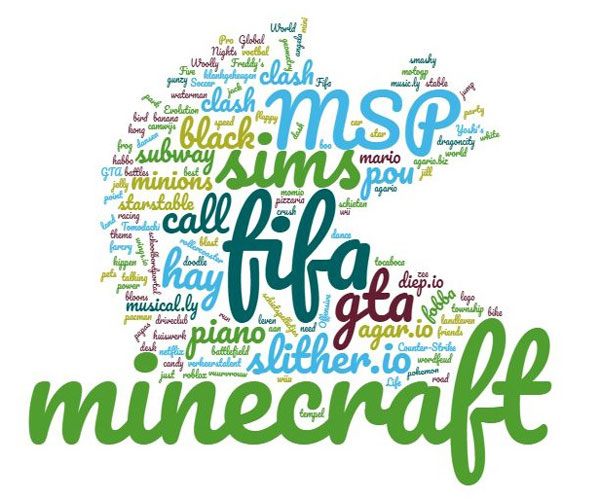The effect of video games on children and youth is an interesting and important topic. Do they increase aggression? Or do video games show benefits to children’s cognitions, emotions and social lives? Each viewpoint can be supported by research. For example, see Craig Anderson’s video on violent video games and aggressive thoughts here and read Isabela Granic and colleagues’ paper on the benefits of playing video games here. For me, Daphne Bavelier’s quote in Nature Reviews Neuroscience is critical: “One can no more say what the effects of video games are, than one can say what the effects of food are”. Therefore, it is important to look at the genre and type of games before one can say what the effect of video games on children is. Below is a Pacman word cloud of the favorite video games of children who participated in my study and the top 3 of the most popular video games.

1. Minecraft
Minecraft is the one and only number one. (I even had to change the frequency for the word cloud to fit it in). They like it so much because they can create their own world and explore each other’s world, the kids told me. No surprise it is so immensely popular.
2. Fifa
Fifa ends on the second place and is especially popular among boys. It is a soccer simulation game that can be played together with friends or family. Even in single-player mode, children like to play games such as Fifa with theirs peers and take turns.
3. Sims
The last video game in the top 3 favorite video games of children is Sims. Only mentioned once more than MovieStarPlanet (a fantasy celebrity play-and-chat site most popular among girls) and Grand Theft Auto (an action-adventure video game actually very inappropriate for kids). Sims is a life simulation video game in which players create and control the life of your characters. It is one of the best-selling video games series of all time.
For more information on age appropriateness of specific video games, see common sense media.




